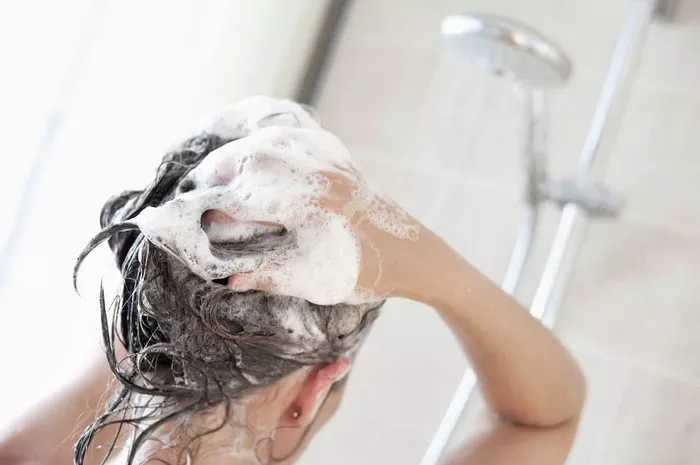When it comes to achieving vibrant, luscious locks, we often focus heavily on the strands themselves. However, healthy hair begins at the scalp. Just as we exfoliate our face and body to remove dead skin cells, exfoliating the scalp is equally crucial for promoting Hair Health. A clean, balanced scalp sets the foundation for stronger, shinier, and more resilient hair. If you’re wondering how to exfoliate your scalp at home effectively, this guide is here to help.
Why Is Scalp Exfoliation Important?
Scalp exfoliation offers several key benefits for Hair Care:
- Removes product buildup from hair products like gels, sprays, and dry shampoos.
- Clears away dead skin cells, preventing dandruff and clogged follicles.
- Boosts blood circulation, stimulating hair growth.
- Improves overall scalp health, resulting in stronger, healthier hair.
Without regular exfoliation, your scalp can become a breeding ground for bacteria, leading to itchiness, flakiness, and even hair loss. Incorporating scalp exfoliation into your routine is one of the best Hair Health Tips you can follow.
Choosing the Right Exfoliation Method
There are two primary ways to exfoliate your scalp:
Physical Exfoliation
Physical exfoliation uses tiny granules to manually scrub away dead skin and buildup. You can use a scalp scrub or a DIY scrub made from natural ingredients.
Chemical Exfoliation
Chemical exfoliants, such as those containing salicylic acid or glycolic acid, dissolve dead skin cells without the need for physical scrubbing. These are ideal for people with sensitive scalps or conditions like psoriasis.
How to Exfoliate Your Scalp at Home
Step 1: Choose Your Exfoliant
Decide whether you prefer a physical or chemical exfoliant. For natural, homemade options, you might choose ingredients like sugar, salt, or baking soda mixed with oils or shampoos.
Step 2: Pre-Treatment with Hair Oils
Before you start exfoliating, massage your scalp with a nourishing Hair Oil. Coconut oil, argan oil, or jojoba oil are excellent choices. This step helps soften the scalp and prepares it for exfoliation.
Step 3: Apply and Massage
Part your hair into sections. Apply the exfoliant directly onto your scalp and gently massage using your fingertips in small, circular motions. Be careful not to scratch your scalp with your nails.
Step 4: Rinse Thoroughly
After massaging for about 5–10 minutes, rinse thoroughly with lukewarm water. Follow up with a gentle shampoo to remove any remaining product.
Step 5: Deep Conditioning
After exfoliating, it’s essential to replenish moisture with Deep Conditioning. Use a hydrating hair mask or conditioner to soothe the scalp and nourish the hair.
DIY Scalp Scrub Recipes
Sugar and Coconut Oil Scrub
Ingredients:
- 2 tablespoons of sugar
- 2 tablespoons of coconut oil
Instructions: Mix the sugar and coconut oil together. Apply to your scalp and massage gently. Rinse and shampoo as usual.
Apple Cider Vinegar Rinse
Ingredients:
- 1 part apple cider vinegar
- 2 parts water
Instructions: Mix and pour over your scalp after shampooing. Let it sit for a few minutes, then rinse thoroughly. Apple cider vinegar helps balance scalp pH and remove buildup.
Baking Soda Paste
Ingredients:
- 2 tablespoons baking soda
- Water (enough to make a paste)
Instructions: Create a paste and apply it directly to your scalp. Massage gently and rinse well. This method is excellent for oily scalps.
How Often Should You Exfoliate Your Scalp?
Scalp exfoliation should be done in moderation. Over-exfoliating can strip natural oils and lead to irritation. Ideally:
- Normal scalp: Once a week
- Oily scalp: Twice a week
- Sensitive scalp: Every two weeks
Always listen to your scalp’s needs. If you notice increased sensitivity or dryness, reduce the frequency.
Special Considerations for Curly Hair
If you have Curly Hair, your scalp may trap more product and natural oils due to the texture. Here are some specific tips:
- Use a gentle exfoliant to avoid disrupting your curl pattern.
- Deep condition immediately after exfoliating to retain moisture.
- Focus more on the scalp and less on the hair strands during exfoliation.
Maintaining a healthy scalp is crucial for keeping curls bouncy, defined, and strong.
Signs You Need Scalp Exfoliation
Wondering if it’s time to exfoliate your scalp? Here are a few signs:
- Persistent itchiness or tightness
- Flaky scalp, even after washing
- Oily roots and dry ends
- Unexplained hair thinning or shedding
- Hair products seem less effective
If you experience any of these symptoms, incorporating scalp exfoliation into your Hair Care routine could make a noticeable difference.
Tips for a Healthier Scalp and Hair
Besides exfoliation, here are a few other Hair Health Tips:
- Use sulfate-free shampoos to avoid drying out your scalp.
- Massage your scalp regularly to stimulate circulation.
- Apply Hair Oils like rosemary or peppermint oil to encourage growth.
- Protect your hair from sun damage with hats or UV-protectant sprays.
- Maintain a balanced diet rich in vitamins and minerals essential for hair growth.
Conclusion
Scalp exfoliation is a simple yet powerful step in any effective Hair Care regimen. By removing dead skin cells and product buildup, you give your hair the best environment to thrive. Whether you opt for a DIY scrub, a chemical exfoliant, or a nourishing Hair Oil treatment, the key is consistency and attentiveness to your scalp’s needs. Start integrating scalp exfoliation into your routine today, and watch as your hair becomes healthier, stronger, and more radiant than ever before. Remember, great hair always begins with a healthy scalp!
Related topics:
- How to Use Conditioner on Curly Hair
- How to Make Hair Silky and Shiny at Home
- How to Fix Split Ends at Home: Simple Remedies for Healthier Hair


